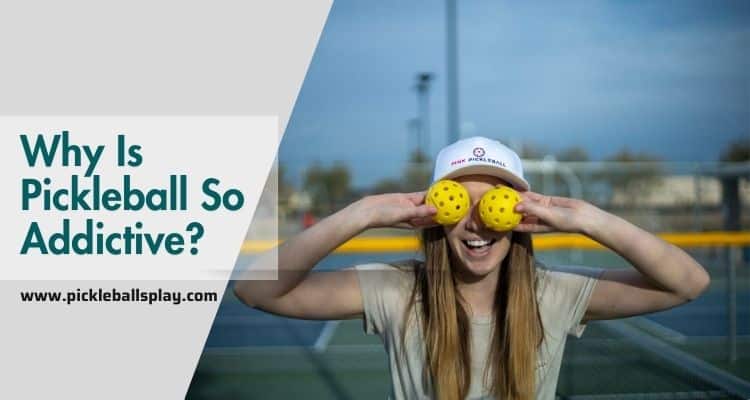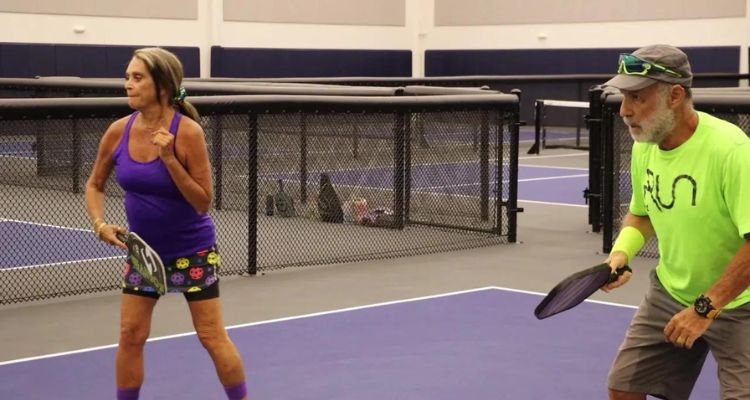Pickleball has taken the world by storm, earning its title as America’s fastest-growing sport for several years running. As of 2025, over 36 million people in the U.S. alone have picked up a paddle, and the numbers keep climbing. Pickleball So Addictive Players often describe it as “addictive,” a sport that hooks them after just one game and keeps them coming back for more. But what is it about pickleball that sparks this obsession? Is it the gameplay, the community, or something deeper?
The Perfect Mix of Fun and Accessibility
One of the biggest reasons is pickleball so addictive is how easy it is to start, and how much fun it is right away. Unlike tennis or golf, which can take months or even years to feel competent in, pickleball has a low barrier to entry. The court is smaller (20×44 feet compared to tennis’s 27×78), the paddle is lightweight, and the perforated ball moves slower, making it easier to hit. Beginners can rally within minutes, and that instant gratification is a game-changer.

- Quick Learning Curve: You don’t need athletic prowess or years of practice to enjoy it. Kids, seniors, and everyone in between can play.
- Low Cost: A decent paddle costs $20–$50, and courts are often free at public parks or community centers.
- Instant Fun: The short rallies and fast pace mean you’re laughing and sweating before you know it.
This accessibility creates a “just one more game” mentality. You feel good fast, and that hooks you. As one player put it, “I tried it once, and by the end of the day, I was plotting my next session.”
The Dopamine Rush of Competition
Pickleball isn’t just fun. It’s a dopamine factory. Dopamine, the brain’s reward chemical, floods your system when you hit a perfect shot, win a rally, or snag a close game. The sport’s structure fuels this rush. Games are typically played to 11 points, often lasting just 10–15 minutes, delivering quick wins and constant action.
- Short, Sweet Victories: Every game offers multiple chances to feel victorious, keeping your brain buzzing.
- Skill Progression: As you improve, mastering a dink or a slam, the sense of achievement grows, pulling you back to the court.
- Close Contests: The smaller court and slower ball level the playing field, making matches competitive even for newbies.
Research shows that activities with frequent, achievable rewards like video games or pickleball trigger dopamine release, reinforcing the urge to keep playing. It’s not addiction in a clinical sense, but it’s a cycle of joy and motivation that’s hard to resist.
A Social Sport That Builds Bonds
Pickleball’s social vibe is a massive part of its addictiveness. Most games are played in doubles, putting four people on a small court where chatting and cheering are inevitable. The open-play culture, where players rotate in and out, means you’re constantly meeting new people. It’s like a party with paddles.
- Instant Community: Courts buzz with laughter, heckling, and encouragement, fostering a sense of belonging.
- Intergenerational Appeal: You might play with a 20-year-old one game and a 70-year-old the next, breaking down social barriers.
- Oxytocin Boost: Social bonding releases oxytocin, the “love hormone,” making you feel connected and eager to return.
Players often say the people keep them hooked as much as the game. “I’ve made friends I’d never have met otherwise,” one enthusiast shared. In 2025, with pickleball courts popping up everywhere from parks to backyards, this community aspect is stronger than ever.

Exercise That Doesn’t Feel Like Work
Let’s be real most of us dread the gym. Pickleball flips that script. It’s a sneaky workout disguised as play, and that’s a huge reason pickleball so addictive. You’re running, lunging, and swinging, but you’re too busy having fun to notice the sweat.
| Physical Benefit | How Pickleball Delivers |
|---|---|
| Cardio | Quick movements boost heart rate |
| Strength | Shots work your arms, core, and legs |
| Agility | Side-to-side action sharpens reflexes |
| Calorie Burn | 200–300 calories per 30 minutes, per recent studies |
- Endorphin High: Physical activity releases endorphins, natural mood-lifters that ease stress and spark euphoria.
- Low Impact: Unlike running or basketball, it’s gentle on joints, so you can play often without burnout.
- Stealth Fitness: Players often say, “I didn’t realize I was exercising until I checked my step count!”
In 2025, with fitness trends leaning toward fun, social activities, pickleball fits the bill perfectly. It’s a workout you want to do, not one you dread.
The Sound of Satisfaction
Here’s a quirky one the sound. That crisp pop when the paddle strikes the ball is oddly satisfying. Players describe it as “therapeutic,” “crackling,” even “musical.” It’s a small sensory thrill that adds to the experience.
- Unique Feedback: The distinct sound gives instant feedback on your shot quality. Clean hits feel rewarding.
- Pavlovian Pull: Over time, that pop becomes a cue for fun, subtly wiring your brain to crave it.
It’s a minor detail, but it’s mentioned enough in player forums and interviews to matter. In 2025, paddle tech has evolved, with brands like Selkirk and Paddletek fine-tuning materials for an even sweeter sound, amplifying this pickleball so addictive quirk.
Endless Room to Grow
Pickleball keeps you hooked because there’s always something new to master. It’s easy to learn but tough to perfect. From dinking (soft shots near the net) to smashing overheads, the skill ceiling is high.
- Strategic Depth: Positioning, timing, and teamwork add layers of complexity.
- Visible Progress: You see improvement fast, fueling the drive to keep going.
- Challenge Accepted: Even pros say they’re still learning, which keeps the game fresh.
In 2025, with pro tours like the PPA gaining traction, players are inspired to level up, chasing that next milestone. It’s a sport that grows with you and never lets you get bored.

The Pandemic Push That Stuck
The COVID-19 pandemic supercharged pickleball’s rise, and its addictive pull has only deepened since. In 2020–2021, people craved safe, outdoor fun, and pickleball delivered. Courts multiplied, and new players got hooked.
- Outdoor Escape: It was a socially distanced lifeline when gyms closed.
- Momentum Shift: Participation jumped 85.7% from 2021 to 2022, per the Sports & Fitness Industry Association.
- Lasting Love: Post-pandemic, the habit stuck. 36.5 million played in 2022, and growth hasn’t slowed.
By 2025, pickleball’s infrastructure courts, clubs, and tournaments has exploded, making it easier than ever to feed the addiction.
A Mental Health Boost
Beyond the physical, pickleball lifts your spirits. It’s a stress-buster and a mood-lifter, thanks to the combo of exercise, socializing, and sunshine (hello, serotonin!).
- Stress Relief: The focus on the game melts away worries.
- Confidence Kick: Winning or just playing well builds self-esteem.
- Mental Sharpness: Coordinating shots hones cognitive skills.
Studies in 2025, like those from the Mayo Clinic, highlight pickleball’s mental health perks, especially for older adults. Players call it “therapy with a paddle,” and that emotional high keeps them coming back.
Why It All Adds Up
So, why is pickleball so addictive? It’s the perfect storm easy to start, hard to master, socially magnetic, physically rewarding, and mentally uplifting. The quick dopamine hits, the satisfying pop, and the endless growth keep you tethered to the court. In 2025, with millions playing and celebrities like Taylor Swift and LeBron James joining the craze, it’s clear this isn’t a fad. It’s a lifestyle.
Whether you’re a newbie or a seasoned “pickler,” the addiction is real. Grab a paddle, hit the court, and see for yourself. Just don’t blame me when you’re canceling plans for “one more game.”



